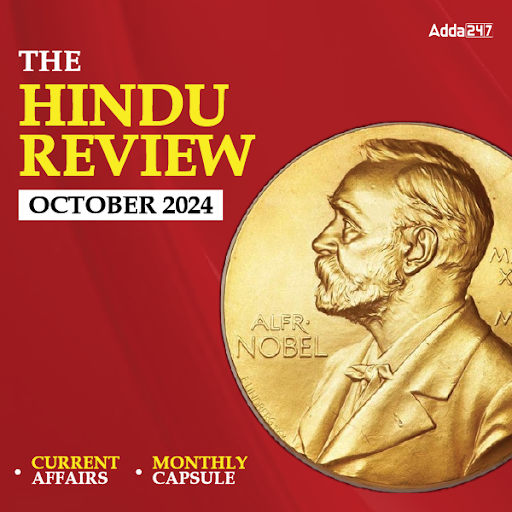Birth Anniversary of Tilak and Azad
July 23 is a special day as it marks the birth anniversary of two of the most illustrious freedom fighters — Bal Gangadhar Tilak and Chandra Shekhar Azad.
We owe a lot to these great sons of our motherland, who had an unwavering commitment to the cause of India’s freedom.To build a New India, we should have role models of such stature to look up to and follow.
Key facts about these freedom fighters/इन स्वतंत्रता सेनानियों से सम्बन्धित महत्वपूर्ण तथ्य यहां दिए गए हैं:
Bal Gangadhar Tilak/बाल गंगाधर तिलक:
-He was born into a Brahmin family on July 23, 1856 in Ratnagiri (Maharashtra) as Keshav Gangadhar Tilak and dies on August 1, 1920, Bombay(now Mumbai).
वह 23 जुलाई, 1856 को रत्नागिरी (महाराष्ट्र) में केशव गंगाधर तिलक के रूप में ब्राह्मण परिवार में पैदा हुआ था और 1 अगस्त 1920 को बॉम्बे (अब मुंबई) में मृत्यु हो गई थी.
-His father, Gangadhar Tilak was a school teacher and a Sanskrit scholar who died when Tilak was sixteen.
उनके पिता, गंगाधर तिलक एक स्कूल शिक्षक थे और संस्कृत विद्वान थे, जब तिलक सोलह वर्ष के थे तब उनकी मृत्यु हो गई थी.
-Tilak was an English and Maths teacher in a school co-founded by him in 1880. The success of the school led to the formation of the Deccan Educational Society and Fergusson College in 1884 and 1885 respectively.
तिलक 1880 में उनके द्वारा सह-स्थापित एक स्कूल में एक अंग्रेजी और गणित शिक्षक थे. स्कूल की सफलता ने 1884 और 1885 में क्रमशः दक्कन एजुकेशनल सोसाइटी और फर्ग्यूसन कॉलेज का गठन किया.
-The British colonial authorities called him “The father of the Indian unrest“. He was also conferred with the title of “Lokmanya“, which means “accepted by the people (as their leader)”.
ब्रिटिश औपनिवेशिक अधिकारियों ने उन्हें “भारतीय अशांति का जनक” कहा. उन्हें “लोकमान्य” के शीर्षक से भी सम्मानित किया गया, जिसका अर्थ है “लोगों द्वारा स्वीकार किया गया (उनके नेता के रूप में)”.
-Tilak started two weekly newspapers, ‘Kesari’ and ‘Maratha’. ‘Kesari’ was a Marathi weekly while ‘Maratha’ was an English weekly.
तिलक ने दो साप्ताहिक समाचार पत्र, ‘केसरी‘ और ‘मराठा‘ शुरू किए. ‘केसरी‘ एक मराठी साप्ताहिक समाचार पत्र था जबकि ‘मराठा‘ एक अंग्रेजी साप्ताहिक समाचार पत्र था.
-Tilak joined the Indian National Congress in 1890.
तिलक 1890 में भारतीय राष्ट्रीय कांग्रेस में शामिल हो गए.
-Tilak opposed the moderate views of Gopal Krishna Gokhale, and was supported by fellow Indian nationalists Bipin Chandra Pal in Bengal and Lala Lajpat Rai in Punjab. They were referred to as the “Lal-Bal-Pal triumvirate”.
तिलक 1890 में भारतीय राष्ट्रीय कांग्रेस में शामिल हो गए.ने गोपाल कृष्ण गोखले के मध्यम विचारों का विरोध किया, और उन्हें बंगाल में साथी भारतीय राष्ट्रपतियों बिपीन चंद्र पाल और पंजाब में लाला लाजपत राय द्वारा समर्थित किया गया था. उन्हें “लाल-बाल-पाल त्रिमूर्ति” के रूप में जाना जाता था.
-In 1916, he founded the Indian Home Rule League.
-Tilak was arrested on charges of sedition in 1906 and sentenced to six years of imprisonment in Mandalay(Burma).
तिलक को 1906 में राजद्रोह के आरोप में गिरफ्तार किया गया और मांडले (बर्मा) में छह साल की कारावास की सजा सुनाई गई.
–“Gita-Rahasya” was written by him during six years imprisonment in Burma.
“गीता-राहस्य” उनके द्वारा बर्मा में छह साल की कारावास के दौरान लिखी गई थी.
– He was one of the first leaders who came up with the concept of ‘Swaraj’ and made it a part of the independence movement.
वह पहले नेता थे जो ‘स्वराज‘ की अवधारणा के साथ आए और इसे स्वतंत्रता आंदोलन का हिस्सा बना दिया.
-Tilak urged people to encourage public unity and changed Ganesh Chaturthi into a public festival.
तिलक ने लोगों से सार्वजनिक एकता को प्रोत्साहित करने और गणेश चतुर्थी को सार्वजनिक त्यौहार में बदलने का आग्रह किया.
-Tilak founded the Shri Shivaji Fund Committee for celebration of “Shiv Jayanti”, the birth anniversary of Chhatrapati Shivaji.
तिलक ने लोगों से सार्वजनिक एकता को प्रोत्साहित करने और गणेश चतुर्थी को सार्वजनिक त्यौहार में बदलने का आग्रह किया.ने छत्रपति शिवाजी की जयंती “शिव जयंती” के जश्न के लिए श्री शिवाजी फंड कमेटी की स्थापना की.
-He gave the famous slogan – “Swaraj is my birth right and I shall have it”.
Chandra Shekhar Azad/चंद्रशेखर आजाद:
-Chandra Shekhar Azad was born on July 23, 1906 in Badarka village of Unnao district in Uttar Pradesh. His parents were Pandit Sitaram Tiwari and Jagarani Devi.
-In 1921, when Mahatma Gandhi launched Non-Cooperation movement, Chandrasekhar Azad actively participated in revolutionary activities.
–The Hindustan Republican Association (HRA) was formed by Ram Prasad Bismil, Yogesh Chandra Chatterji, Sachindra Nath Sanyal and Shachindra Nath Bakshi in 1924.
हिंदुस्तान रिपब्लिकन एसोसिएशन (एचआरए) का गठन राम प्रसाद बिस्मिल, योगेश चन्द्र चटर्जी, सचिंद्र नाथ सान्याल और शचिंद्र नाथ बक्षी ने 1924 में किया था.
-He was involved in the Kakori train robbery of 1925.
यह 1925 के काकोरी ट्रेन लूटपाट में शामिल थे.
-He was involved in the shooting of British police office John Saunders in Lahore in 1928 to avenge the killing of Lala Lajpat Rai.
-Azad and Bhagat Singh secretly reorganised the HRA as the HSRA in September 1928.
-On February 27, 1931, he shot himself dead with his last bullet after a shootout with police at Allahabad’s Alfred Park.
-Alfred Park in Allahabad, has been renamed Chandrashekhar Azad Park.
इलाहाबाद में अल्फ्रेड पार्क का नाम बदलकर चंद्रशेखर आजाद पार्क कर दिया गया है.
-His famous proclamation, ‘Dushmano Ki Goliyon Ka Saamna Hum Karenge, /Azad Hi Rahe Hain, aur Azad hi Rahenge’, which translates into ‘I will face the bullets of the enemies, I have been free and I’ll forever be free’, is exemplary of his brand of revolution.
उनकी प्रसिद्ध घोषणा, ‘दुश्मनो की गोलियों का सामना हम करेगे, / आज़ाद ही रहे हैं, और आज़ाद ही रहेगे‘, जिसका अनुवाद ‘मैं दुश्मनों की गोलियों का सामना करूंगा, मैं स्वतंत्र हूं और मैं हमेशा मुक्त रहूंगा ‘, क्रांति का यह वक्तव्य अनुकरणीय है.





 The Hindu Review October 2022: Download ...
The Hindu Review October 2022: Download ...
 Good News, IBPS Clerk Vacancies Increase...
Good News, IBPS Clerk Vacancies Increase...
 IBPS PO Vacancies Increased Upto 5973
IBPS PO Vacancies Increased Upto 5973




